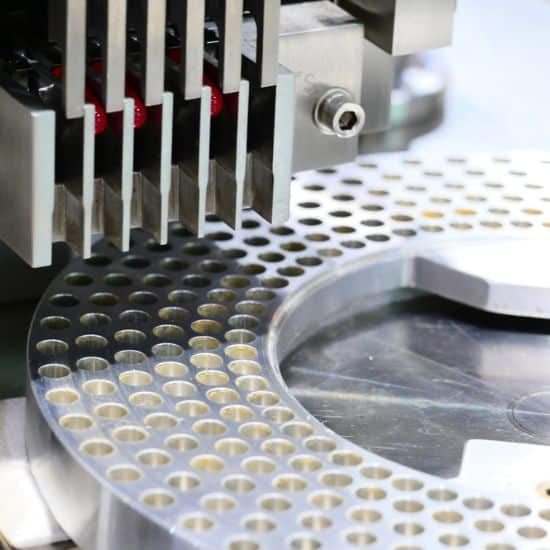Equipment financing is a financial arrangement that allows businesses to acquire the necessary equipment or machinery they need for their operations without having to make a large upfront payment.
The purpose of business equipment financing is to help businesses acquire the equipment they need to operate or expand their operations. It includes various types of equipment, such as machinery, vehicles, technology hardware, medical equipment, construction equipment, and more.
Equipment financing is not a stand alone offering at EPOCH. Instead, equipment is included only as part of a comprehensive asset based lending facility that is anchored by accounts receivable. When appropriate, equipment can be added to the collateral mix to enhance availability and strengthen the overall structure. This approach supports operational needs while keeping the emphasis on AR driven liquidity and working capital stability.
When you apply for business equipment finance, the lender evaluates the equipment you intend to purchase. Factors considered include the equipment's value, condition, useful life, and resale potential. This assessment helps determine the maximum loan amount.
Lenders consider factors like the creditworthiness of the business, its financial stability, and the equipment's value. Collateral, such as a lien on the equipment, may be required to secure the loan.

After determining the equipment value, the lender offers a loan amount based on a percentage of the equipment's appraised value. Both parties agree on the loan terms, including interest rates, repayment period, and any associated fees.
The business equipment itself is used as collateral to secure the loan. If the borrower defaults, the lender can seize and sell the equipment to recover the outstanding debt.
Equipment financing may offer tax advantages depending on the jurisdiction. Lease payments might be tax-deductible as operating expenses.
Lenders may require periodic updates on the equipment's condition and usage. This ensures that the equipment remains in good working order and retains its value, reducing the lender's risk.
After finalizing the loan agreement, the lender disburses the funds. The borrower uses these funds to purchase the specified equipment, which should be integrated into the business operations promptly.
The borrower must repay the loan according to the agreed terms. This typically involves regular payments, including principal and interest, over the loan's duration. Proper management of loan repayments helps maintain a good credit profile and ensures financial stability.
Maintaining the equipment in good working condition is crucial. Regular maintenance schedules ensure the equipment's longevity and efficiency. The borrower should also periodically evaluate the equipment's performance to ensure it meets business needs and delivers the expected return on investment.
We work with businesses that need reliable access to equipment for daily operations and future growth. Whether replacing outdated machinery, adding capacity to meet rising demand, or investing in specialized tools, our financing solutions are designed to keep your business equipped and competitive.
Our equipment financing services are available nationwide, giving businesses across the United States access to funding solutions that match their industry needs and growth goals.
We provide financing options that scale with your business. From single equipment purchases to large facility upgrades, our solutions are structured to fit the size and scope of your operations.
The amount of financing available depends on the type of equipment, its value, and your business profile. We take a flexible approach to ensure the funding structure works for both immediate needs and long-term affordability.
In most cases, the equipment itself serves as the collateral. Assets must hold verifiable value and align with your operational needs to secure financing with confidence.
Our pricing remains competitive and is shaped by factors such as the type of equipment, its expected lifespan, repayment terms, and your overall financial position. We focus on creating terms that support affordability while driving business growth.
By financing equipment rather than purchasing it outright, businesses can preserve their capital and allocate it to other areas of their operations, such as marketing, inventory, or hiring additional staff.
Equipment financing enables businesses to spread the cost of equipment over time through regular payments, which helps manage cash flow more effectively.
Equipment financing offers flexibility in terms of payment structures, lease terms and end-of-term options. Businesses can often tailor financing arrangements to their specific needs and financial capabilities.
As technology and equipment are rapidly developing, financing allows businesses to keep up to date with the latest advancements without the burden of large upfront costs.

When it comes to equipment financing, businesses look for more than just access to funds. They need a partner who understands their industry, provides flexible solutions, and supports long-term growth. Our approach is designed to deliver capital quickly, optimize costs, and build lasting relationships that help companies stay competitive in fast-changing markets.
We recognize that equipment is the foundation of productivity, efficiency, and growth in any business. Our team combines financial expertise with industry knowledge to structure solutions that maximize the value of your equipment investments. By financing instead of purchasing outright, you gain the flexibility to upgrade, expand, and remain competitive without overextending resources.
No two businesses approach equipment needs in the same way. Our financing solutions are designed to align with your operational cycles, equipment usage patterns, and budget goals. Whether you need short-term funding for seasonal demand or long-term financing for critical machinery, we customize terms that fit your strategy and growth trajectory.
Timing can define success in competitive industries. We simplify the financing process to deliver quick access to the capital you need, reducing delays that could hinder operations or expansion plans. With our efficient approvals and responsive support, you can seize opportunities, address urgent needs, and keep your business moving forward without disruption.
Managing large equipment purchases can put a strain on working capital. Our financing solutions are built to spread costs over time, allowing you to conserve liquidity for other essential priorities. By reducing upfront expenses, we help you maintain cash flow, improve financial stability, and invest strategically in areas that fuel broader business growth.
We see financing as more than a transaction. It is a long-term commitment to your success. As your business evolves and technology advances, we remain a reliable partner by adapting solutions to your changing needs. Our ongoing support ensures that your financing strategy grows with you, providing confidence and stability for the future.
Unpaid invoices shouldn’t hold your business back. Our accounts receivable financing solutions provide timely access to capital, helping you manage expenses, support operations, and move forward with confidence.
Contact usEquipment financing helps construction firms acquire machinery like cranes, excavators, and loaders to complete projects efficiently while preserving cash flow for operational and labor costs.
Financing enables manufacturers to invest in production machinery, technology upgrades, and automation tools, supporting increased output and maintaining competitive efficiency without tying up working capital.
Fleet expansion, trucks, and material handling equipment can be financed to meet delivery schedules, reduce downtime, and improve service capacity while protecting operational liquidity.
Hospitals and clinics can finance medical equipment, diagnostic tools, and technology systems, ensuring patient care quality while maintaining stable cash flow.
Farmers and agribusinesses can acquire tractors, harvesters, irrigation systems, and storage solutions through financing, improving productivity and scaling operations without straining finances.
Companies can finance servers, networking equipment, and office technology to support growth, maintain system reliability, and implement innovative solutions without depleting capital.
Financing covers kitchen machinery, production equipment, and storage solutions, enabling businesses to meet demand, maintain quality, and expand operations without disrupting cash flow.
Printers and publishers can finance presses, binding machines, and digital equipment to increase output, adopt modern technology, and maintain smooth operations.
Retailers can finance point-of-sale systems, shelving, display units, and inventory management tools to enhance customer experience and operational efficiency without large upfront costs.
Hotels and restaurants can finance kitchen equipment, furniture, and facility upgrades, improving service quality, operational efficiency, and guest satisfaction while protecting cash flow.
We work with companies that rely on machinery, tools, or technology to run operations efficiently. Here are common situations where our clients turn to equipment financing:

When growth requires more machinery or tools, equipment financing provides the capital to acquire essential assets without delaying operations or stretching working capital.
Older equipment can slow production or increase maintenance costs. Financing allows businesses to invest in modern, efficient machinery while preserving cash flow.
Unexpected spikes in demand often require additional equipment. Financing ensures companies can ramp up operations quickly to meet orders without financial strain.
Securing big contracts may require specialized equipment upfront. Equipment financing ensures businesses can fulfill obligations confidently without depleting operational funds.
Introducing new offerings may involve investing in new machinery or technology. Financing provides the flexibility to expand capabilities while maintaining liquidity.
Equipment failures can disrupt production. Financing enables businesses to replace or lease machinery promptly, minimizing downtime and maintaining productivity.
Opening new sites or branches requires additional equipment. Financing helps businesses scale operations efficiently and support growth strategies across multiple locations.
When capital is tied up elsewhere, equipment financing unlocks liquidity to cover payroll, supplier payments, or other operational expenses while acquiring necessary assets.
Qualifying for equipment financing is generally straightforward, as the equipment itself often serves as collateral. Approval depends on your business’s financial profile, repayment capacity, and the type of equipment being financed.
Credit requirements vary by lender. While stronger credit profiles receive better terms, many lenders also evaluate business performance, cash flow, and equipment value, making financing possible even without a high credit score.
Not always. Equipment financing can take the form of a loan, where you own the equipment after repayment, or a lease, where you use the equipment for a set term with flexible end options.
Requirements typically include proof of business operations, financial statements, and details about the equipment being purchased. Lenders may also consider cash flow, time in business, and industry stability when structuring financing.
Equipment financing is used to acquire or upgrade essential tools, machinery, vehicles, or technology without tying up working capital. It enables businesses to remain competitive, productive, and efficient while preserving liquidity.